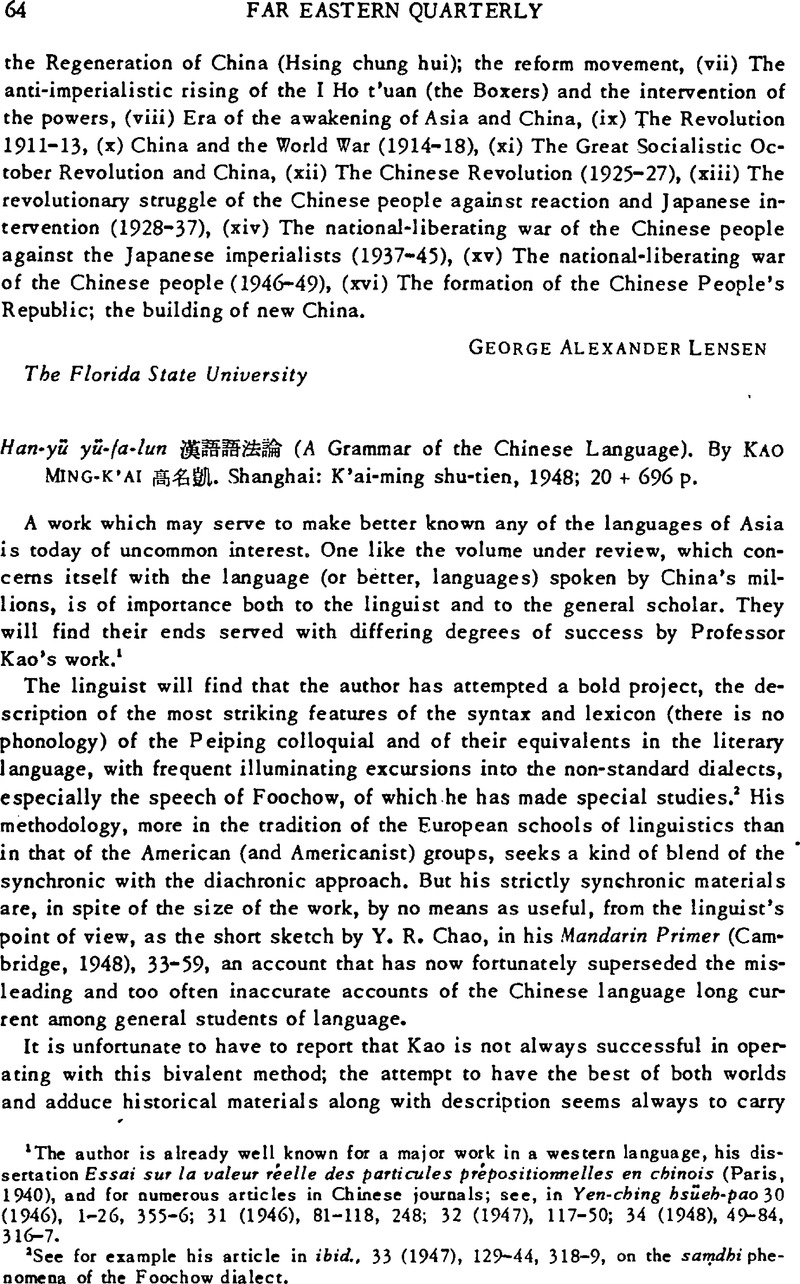No CrossRef data available.
Article contents
Han-yü yü-fa-lun (A Grammar of the Chinese Language). By Kao Ming-k'ai . Shanghai: K'ai-ming shu-tien, 1948; 20 + 696 p.
Review products
Published online by Cambridge University Press: 23 March 2011
Abstract

- Type
- Book Reviews
- Information
- Copyright
- Copyright © The Association for Asian Studies, Inc. 1952
References
1 The author is already well known for a major work in a western language, his dissertation Essai sur la valeur reelle des particules prepositionnelles en chinois (Paris, 1940)Google Scholar, and for numerous articles in Chinese journals; see, in Yen-ching hsūeh-pao 30 (1946), 1–26, 355–6; 31 (1946), 81–118, 248; 32 (1947), 117–50; 34 (1948), 49–84, 316–7.Google Scholar
2 See for example his article in ibid.. 33 (1947), 129–44, 318–9, on the saṃdhi phenomena of the Foochow dialect.
3 For that matter, it is best translated into Japanese by the Sino-Japanese loan word which it underlies, dōtoku, “morality.” This gets our analysis nowhere, but equally as far as reference to English.
4 In what follows, forms with * are ancient Chinese reconstructions, forms with ** are archaic Chinese reconstructions.
5 Here and below, Thai forms are given in the phonemic orthography of Haas, M. R. and Subhanka, H. R., Spoken Thai. 2 vols., New York, 1945Google Scholar, but writing long vowels as clusters, not with the raised dot as there.


